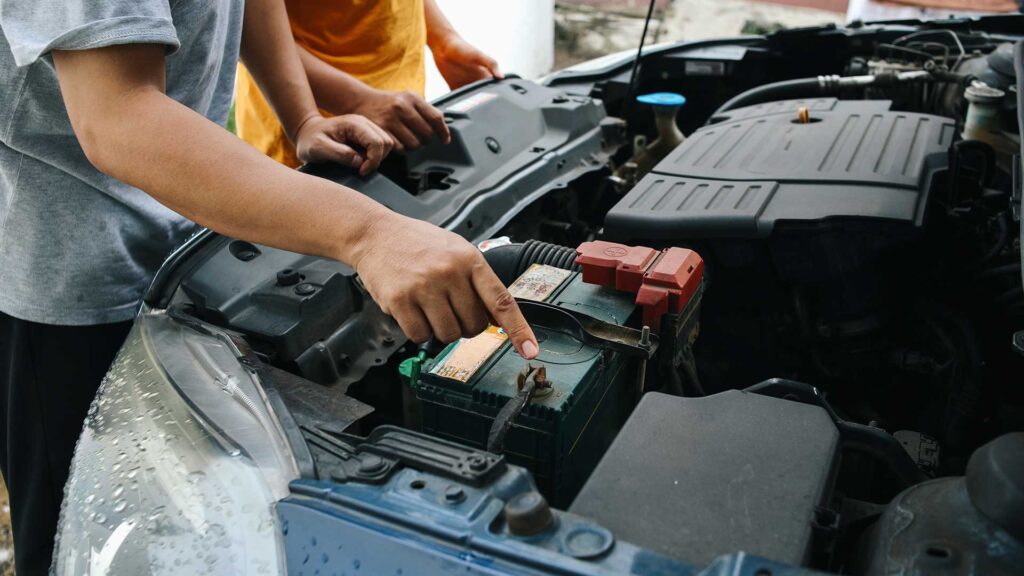Any experienced driver is familiar with the situation when, at the most inopportune moment, a car or motorcycle refuses to start. The reason for 99% of cases is offensively simple – the battery is dead. To avoid an unpleasant situation, we will tell In this article, how to properly maintain the battery to minimize the risks of its rapid failure and ensure reliable operation for many years. Although, the article will be useful to all car enthusiasts, regardless of their place of residence.
The Importance Of Regular Car Battery Maintenance
Technical development of the automobile industry constantly brings innovations that yesterday seemed fantastic. New trends have not bypassed the design of car batteries. About 90% of all car batteries are maintenance-free – that is, the owner does not have the ability to directly control the level and density of the electrolyte, there is no need to add acid or distilled water.
But the responsibility to monitor the integrity of the battery, regularly monitor the charge level of the car battery does not disappear. At a high degree of discharge – forcibly charge using a charger, without relying on the automatic charging from the car generator.
Regular maintenance of the car battery allows to extend the service life by 50-100%, compared to the one set by the manufacturer. With minimal labor costs, a solid saving of funds is obtained, because the cost of the current source is quite significant.
Factors Affecting Battery Lifespan
It is believed that car batteries are something like disposable batteries: use them for a couple of years and throw them away. This is especially true for city motorists, who often face the problem of rapid battery discharge due to short trips and frequent stops. However, contrary to popular belief, proper prevention and maintenance can significantly extend the life of your battery.
Yes, the problem of rapid loss of battery capacity is relevant, especially for those who do not leave the city and drive short distances. In an ideal situation, the battery is charged during long-term driving from the generator, but what if you drive only 10-20 km every day with many stops? In such conditions, it is almost impossible to fully charge the battery.
🔋 1. Charge Level
One of the key factors affecting the battery life is its charge level. Frequent “deep” discharges can significantly shorten the battery life cycle. It is optimal to maintain the charge level within 80-100% to ensure maximum battery life.
🌡️ 2. Temperature Conditions
Batteries are sensitive to temperature fluctuations. Cold can slow down the chemical processes inside the battery, while excess heat can lead to overheating and accelerated wear. Therefore, it is important to ensure optimal storage and use conditions.
⚡ 3. On-board Network
A properly configured vehicle electrical system plays a major role in maintaining battery efficiency. For example, if the alternator does not provide sufficient voltage, the battery will not be fully charged, which will lead to early wear.
🧪 4. Corrosion
Corrosion of the contacts can slow down the charging and discharging process and cause the battery to lose efficiency. Therefore, it is important to regularly check the condition of the contacts and clean them if necessary.
🧊 5. Effect Of Sulfation
Sulfation is the process of formation of lead sulfate crystals on the battery plates, which can occur during long-term storage in a discharged state. This phenomenon reduces the battery capacity and can lead to its failure.
Don’t wait for a dead battery
✅ Frequently Asked Questions About Car Battery Maintenance
Proper car battery maintenance can save you from unexpected breakdowns and costly replacements. Whether you’re a new driver or a seasoned car owner, the FAQs below answer the most common questions about how to extend your battery’s life and keep your vehicle running reliably.
It’s recommended to check your car battery’s charge level at least once every 3–4 weeks. Regular checks help you avoid deep discharges, which can drastically shorten the battery’s lifespan.
Yes, both high heat and cold temperatures negatively impact battery performance. Heat accelerates chemical wear, while cold slows the reaction rates inside the battery, making it harder to start the car.
Common signs include slow engine crank, dim headlights, frequent jump starts, corrosion around terminals, and a dashboard battery warning light. If you notice any of these, inspect or replace the battery.
Yes. Short drives don’t give the alternator enough time to fully recharge the battery, especially in stop-and-go traffic. Over time, this can lead to frequent undercharging and reduced battery life.
To prevent sulfation, avoid leaving your battery discharged for extended periods. Regular driving or periodic charging keeps the lead sulfate crystals from forming and damaging the battery plates.

